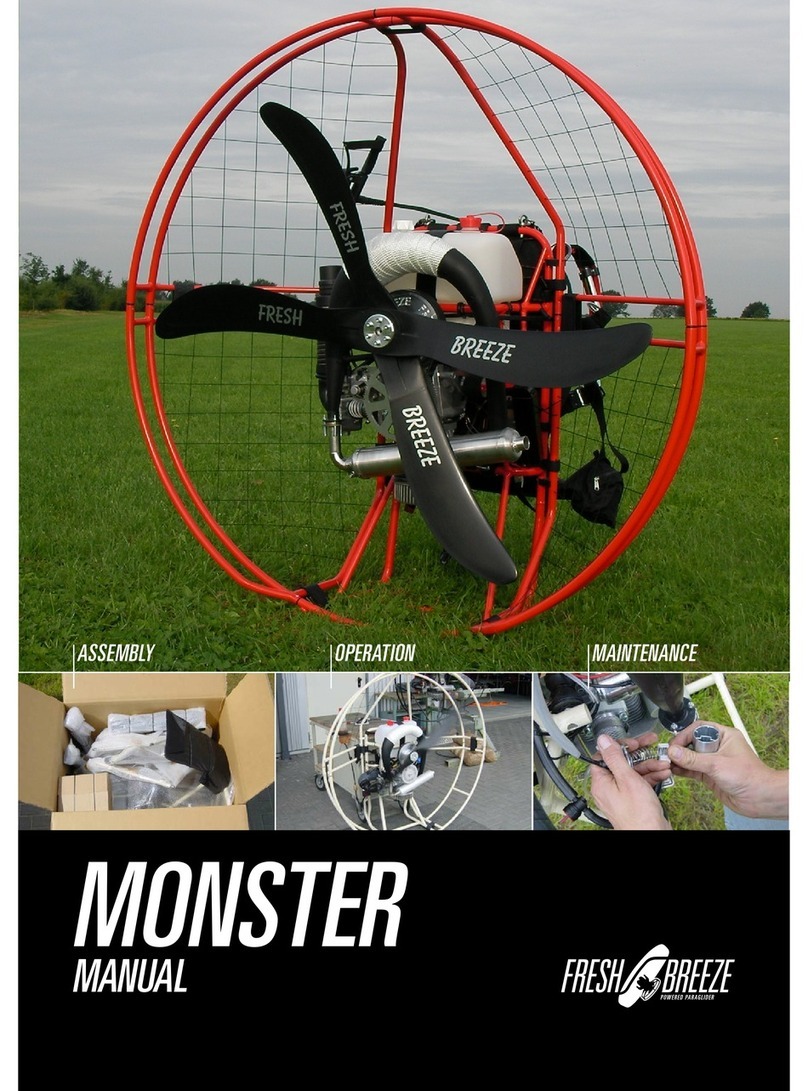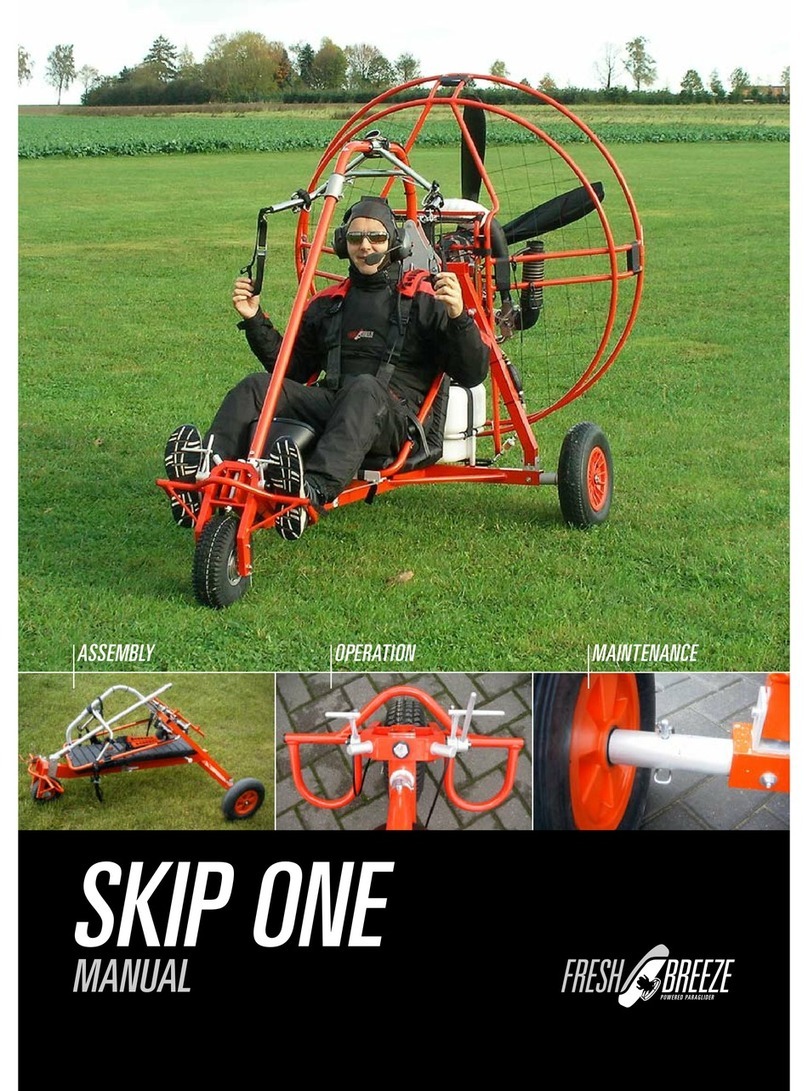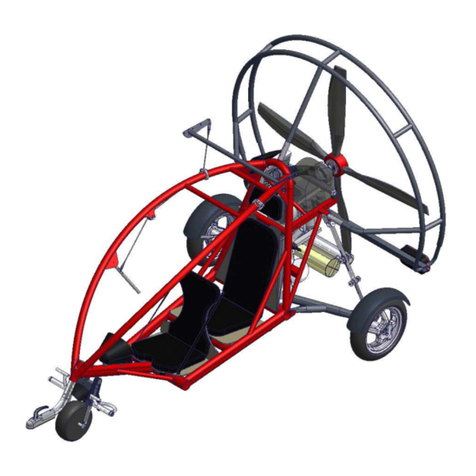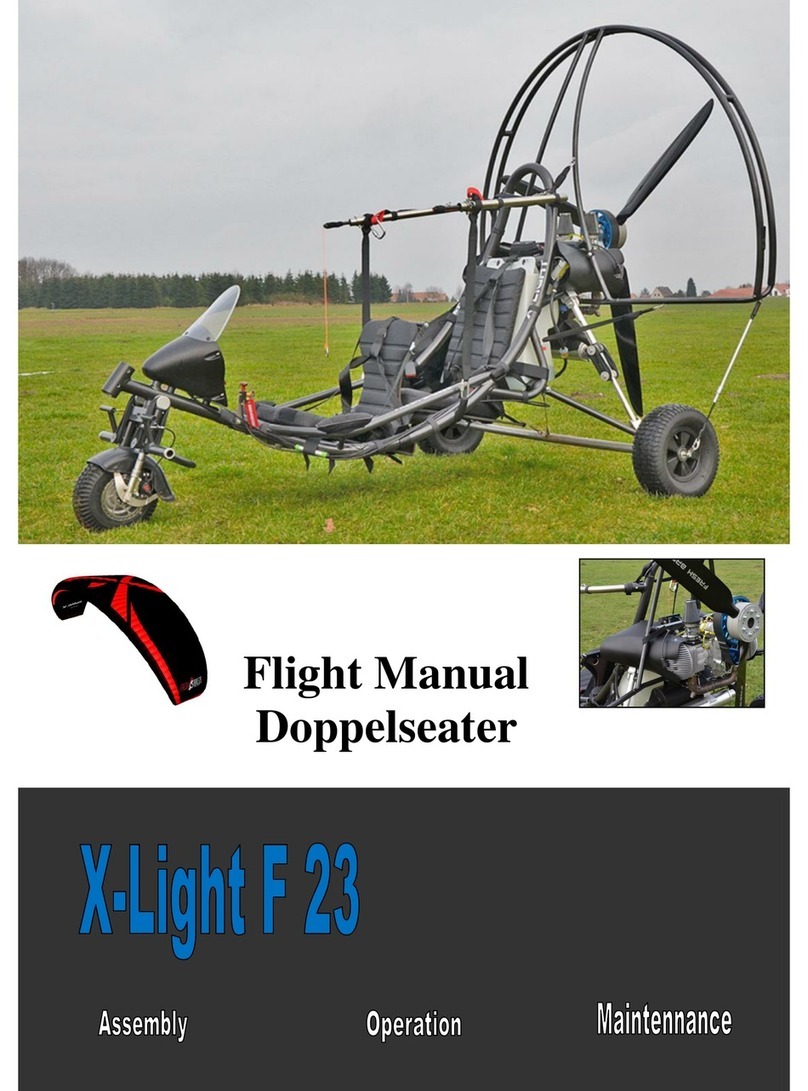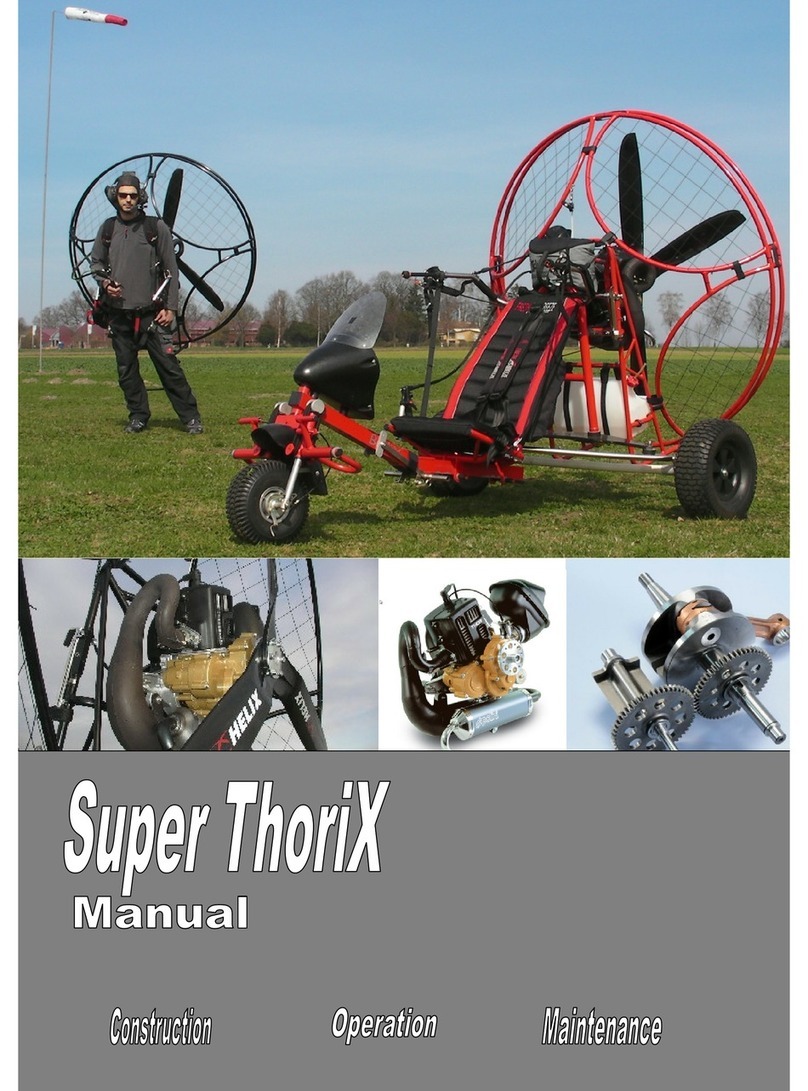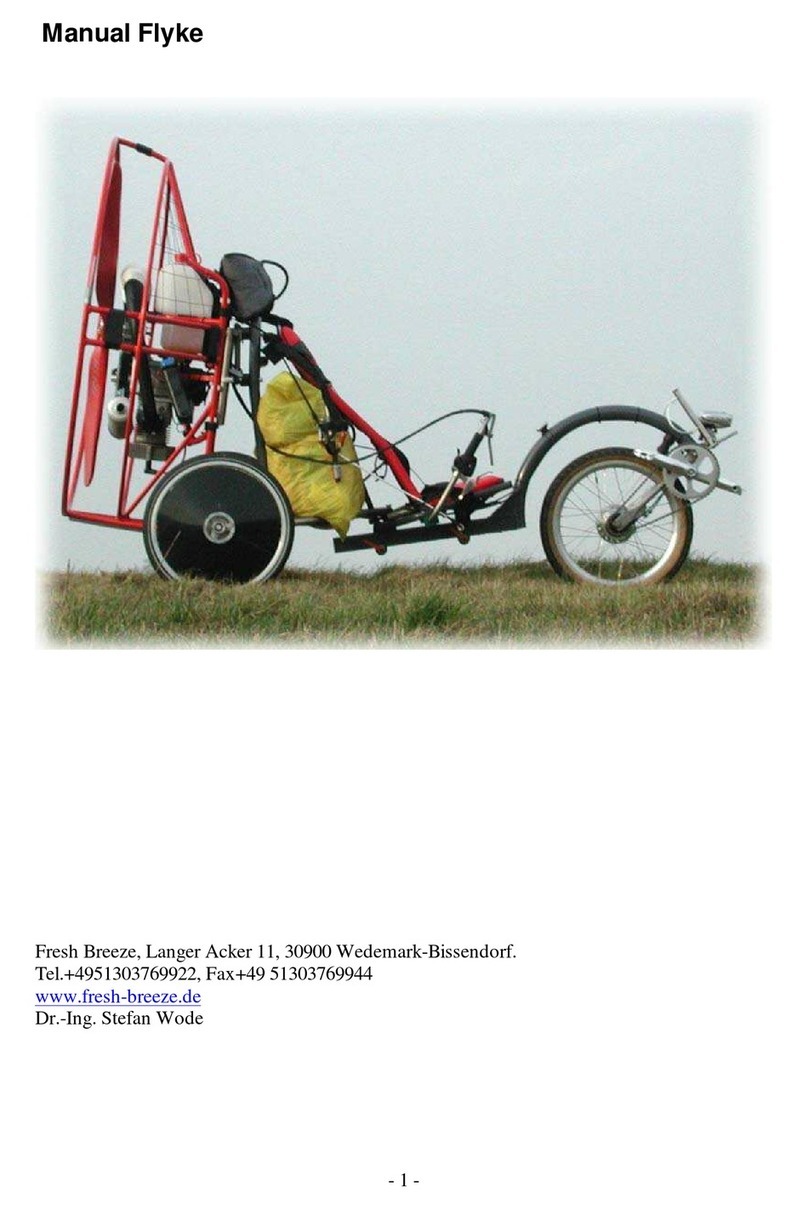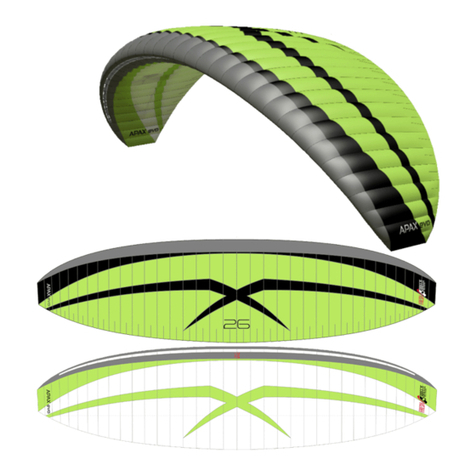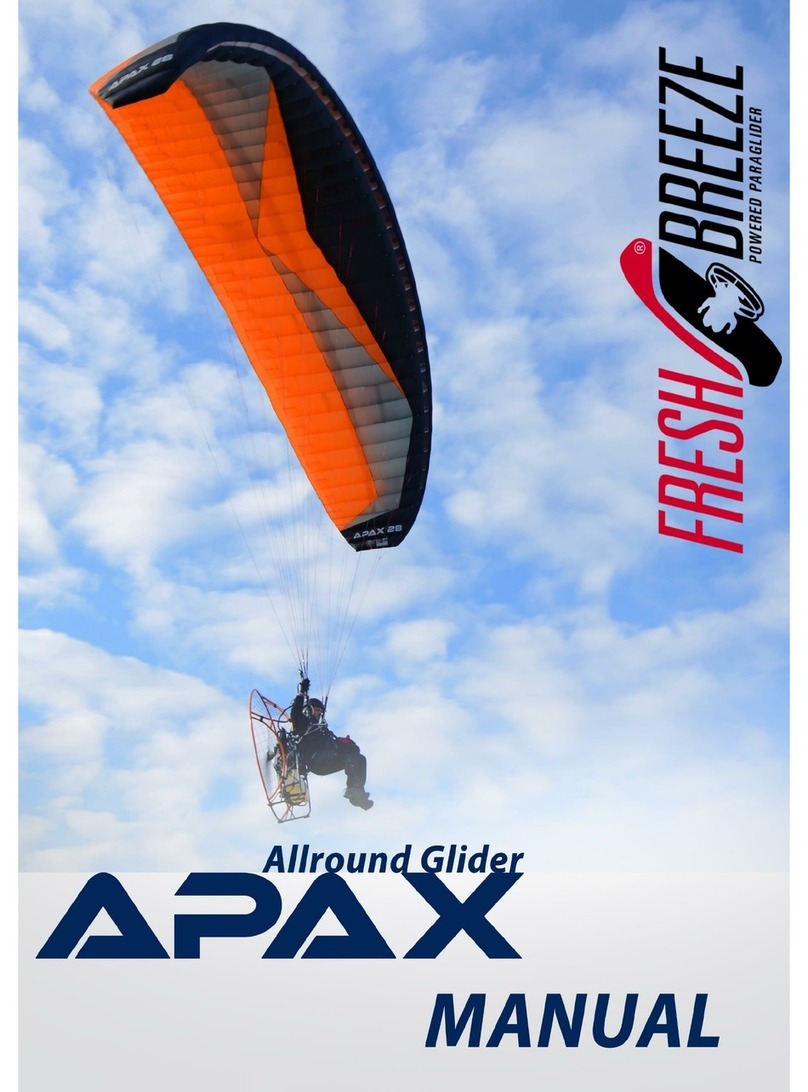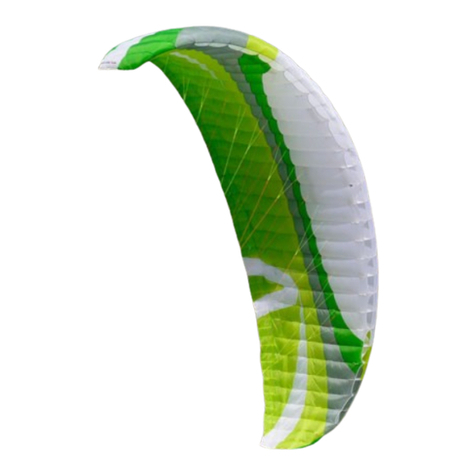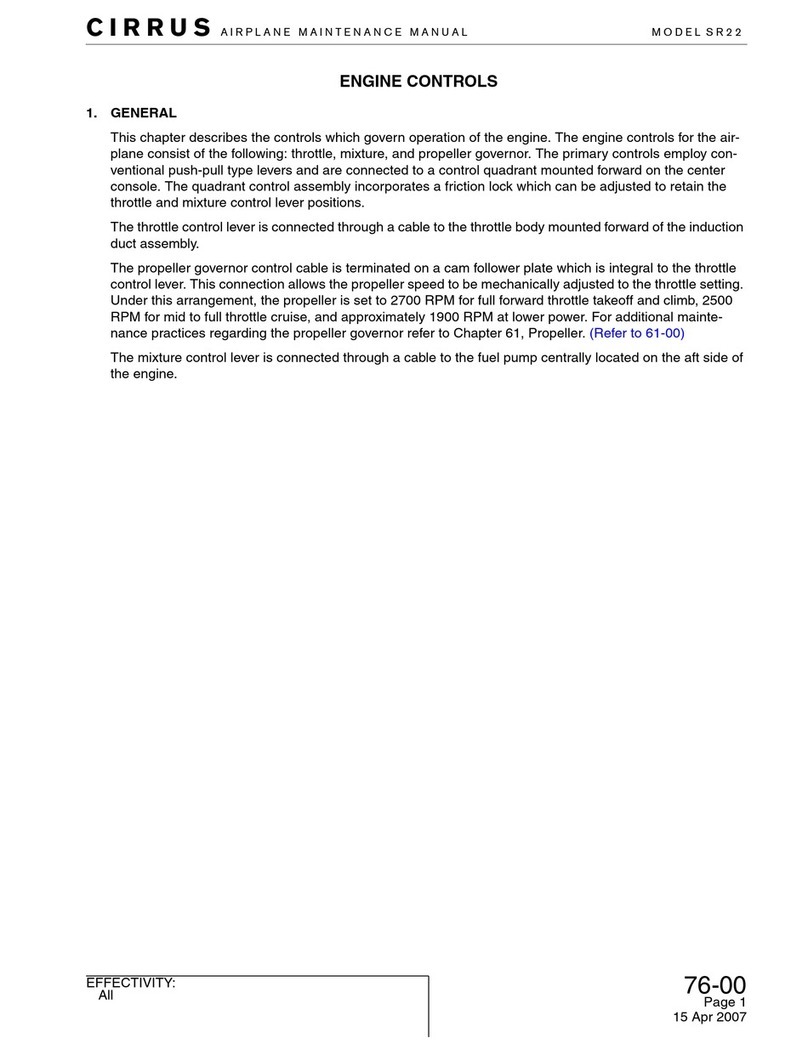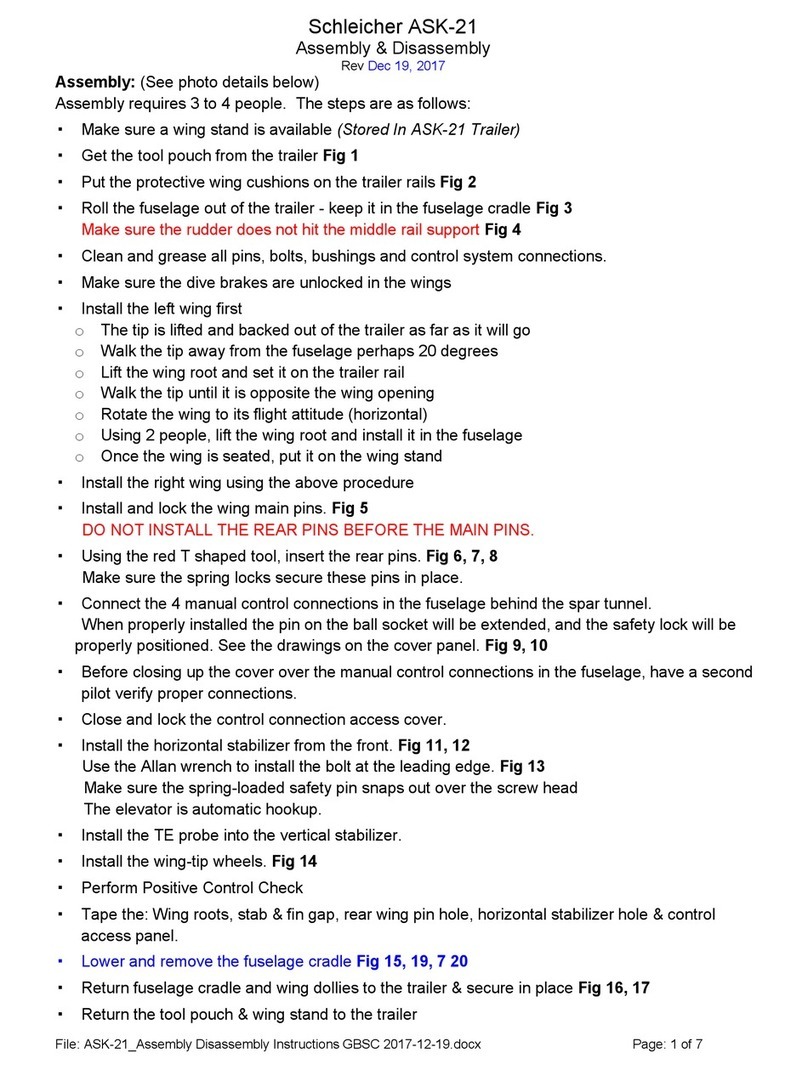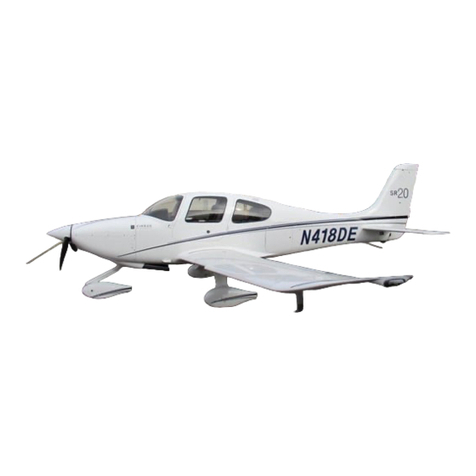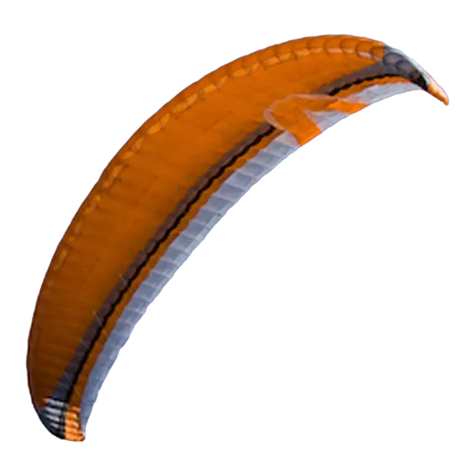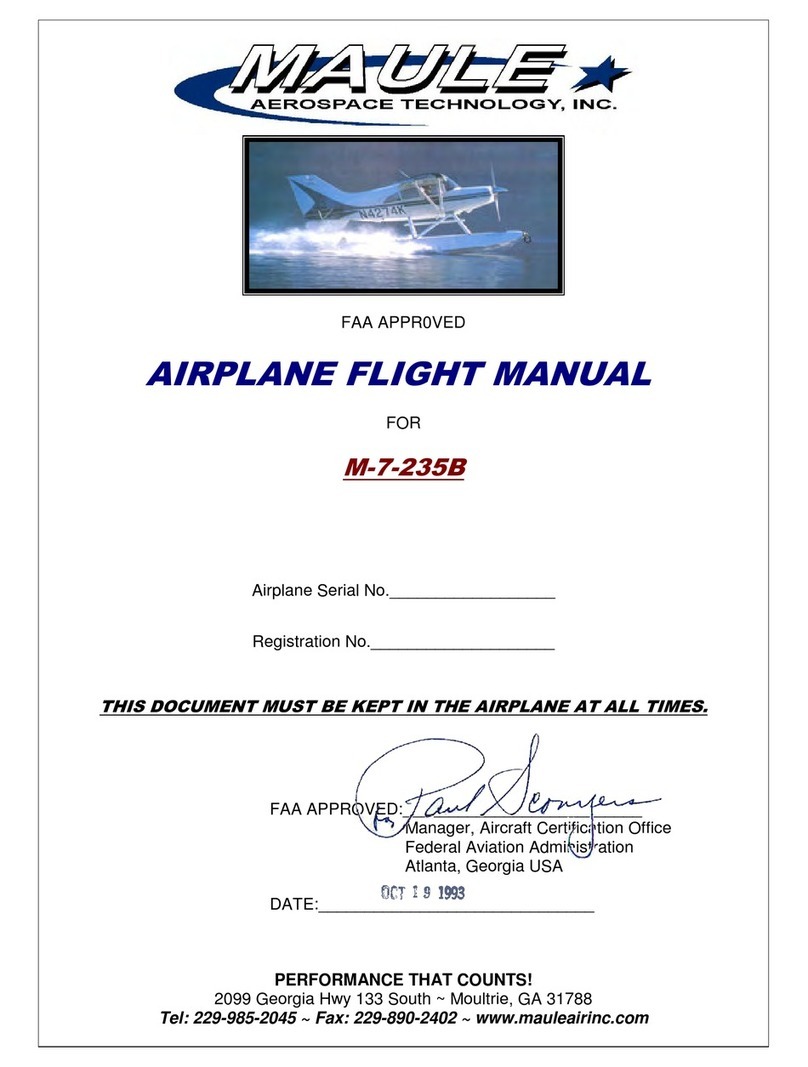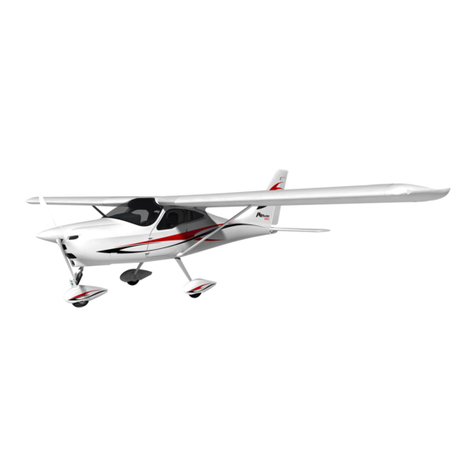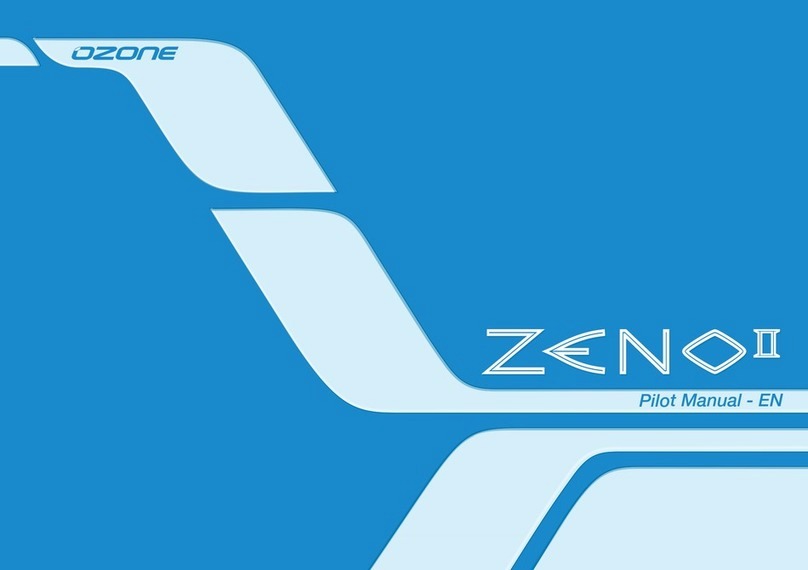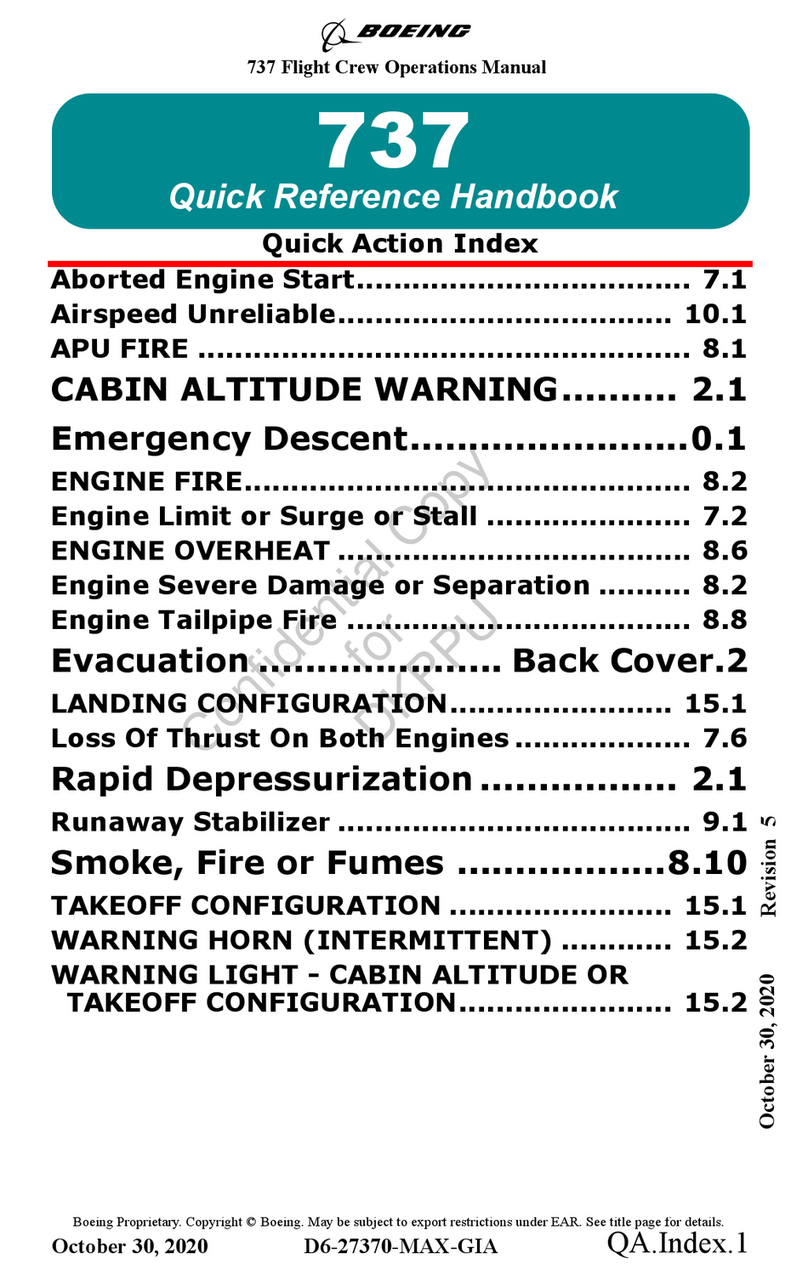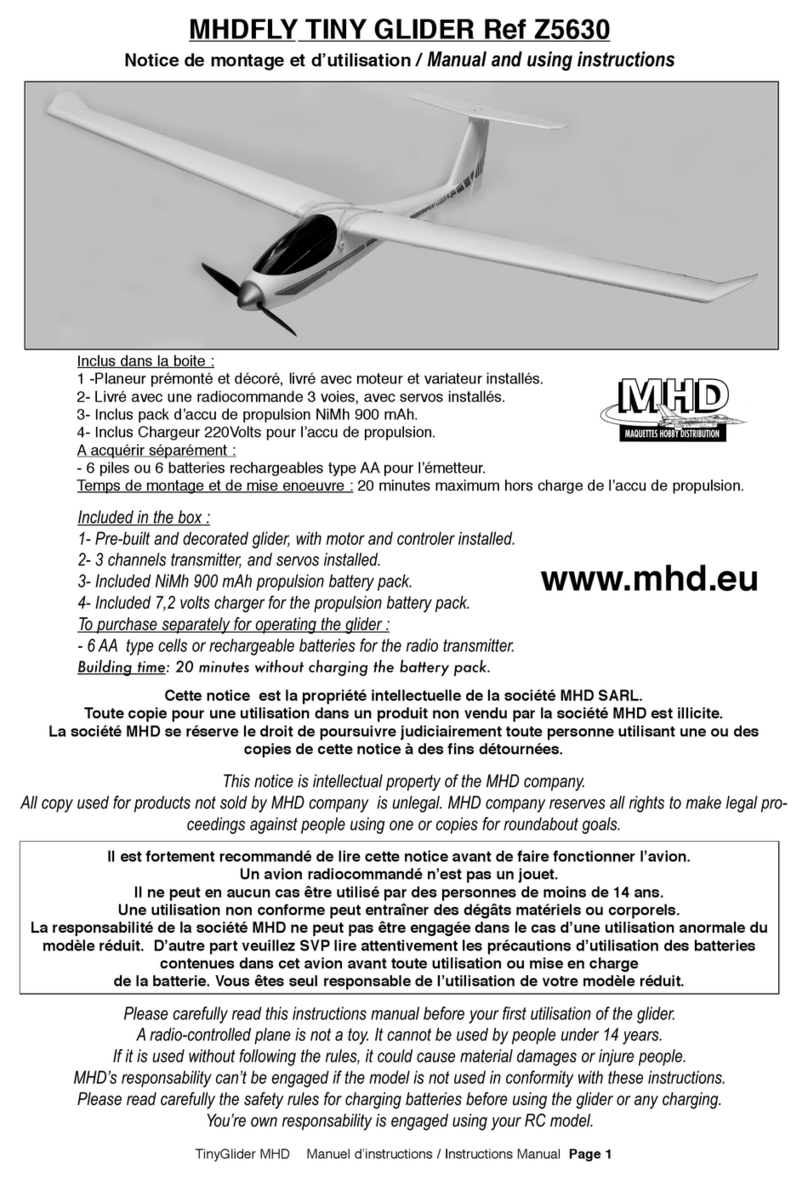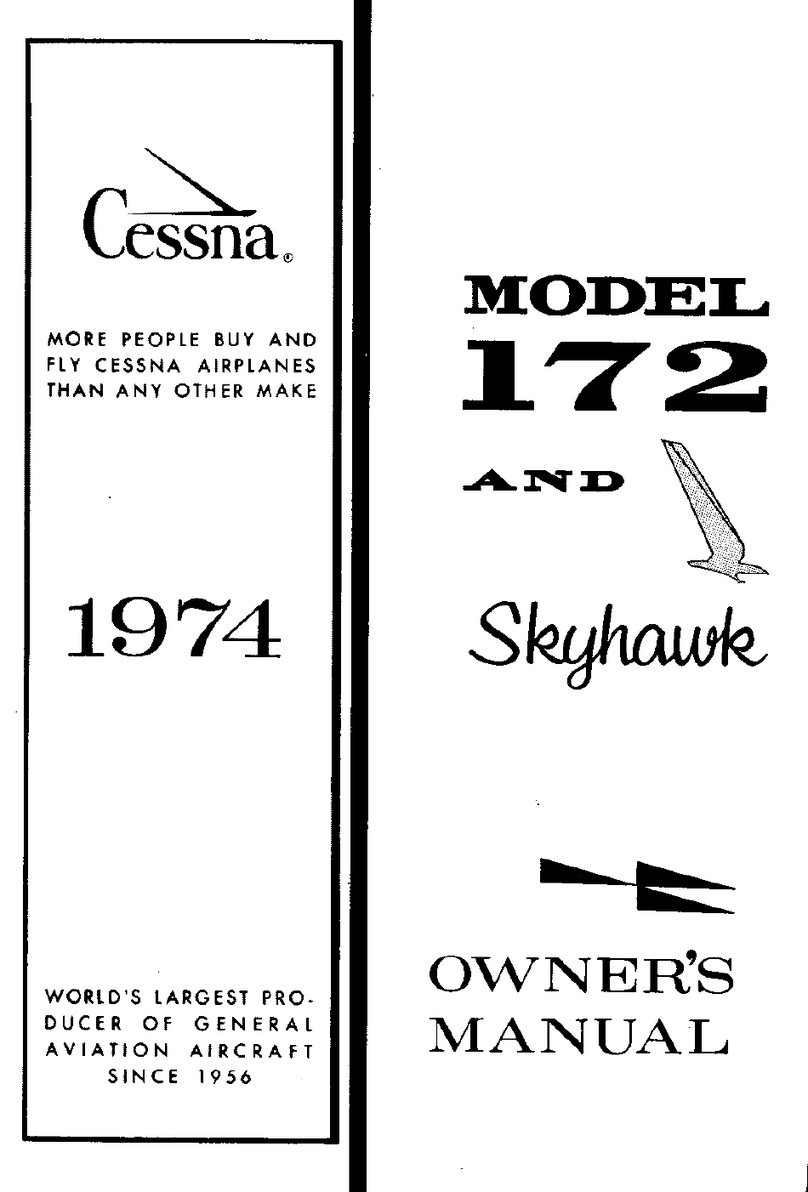
8
A one-sided stall announces itself early on.
The wing inside curve becomes soft and stops almost.
The brake is to be released on this side immediately.
8.6. Active Flying
Through active ying, collapses can often be prevented!
Active ying means braking impulses to keep the paraglider stable. The glider should be in the best position
if the glider is in the center above you.
When you y into thermals, the angle of attack increases. The brakes should now be opened.
When ying in downwind (falling out of the thermals) the brakes should be pulled.
8.7.Landing
The RelaX is easy to land.
The landing should always be against the wind direction.
In the nal approach, keep the paraglider calm with little braking work. Do not start braking too soon.
The kinetic energy in the aircraft is only once available when landing and is used so that the sinking speed
and the speed can be maximally reduced.
Do not drop the paraglider on the front edge after tough down.
9. Extreme Situations
9.1.Asymmetric collaps
The lateral collapse is probably the most common disturbance in paragliding.
This usually only occurs on the outer wing of the RelaX.
In order not to turn away, the brake must be countered on the other side.
The speed of the engine should be drastically reduced.
If it is a strong lateral Einklapper, may be countered only very metered. Heavy braking could cause a stall
By pumping on the folded side, the opening of the cap can be accelerated.
If the driver does not intervene on the lateral collapse, the paraglider usually recovers automatically after 1 revolution.
However, one should not rely on this, because in strong tubulence, an independent unfolding can also be prevented,
and the paraglider goes over into a steep spiral. That should be prevented in any case.
9.2. Cravat
If the paraglider does not open again by itself, a hangover could be the cause.
If that can not be changed and you are in low altitude, the rescue device should be triggered.
To solve a Cravat the following possibilities are possible:
